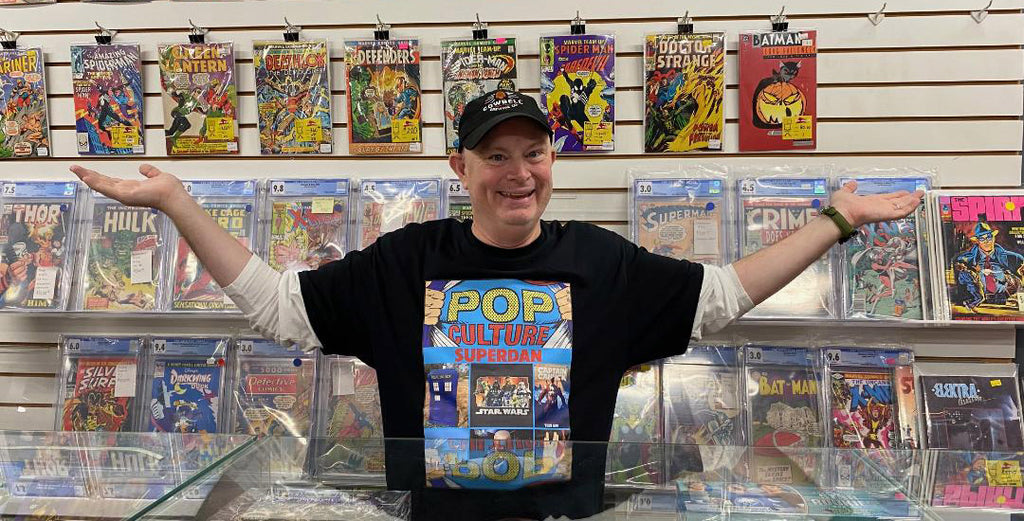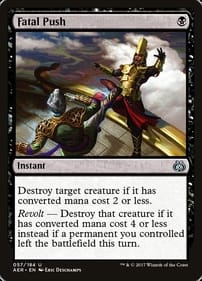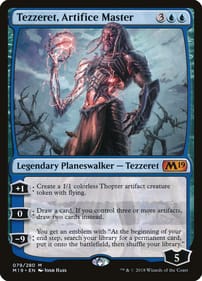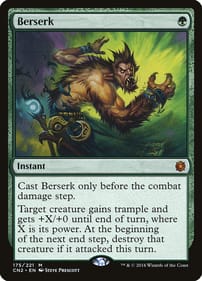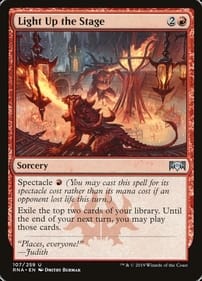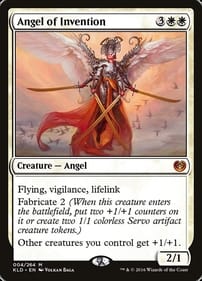R2-D2 and C-3PO Never Did This
By Dan BrownA bunch of robots walk into a bar, but they aren’t the strangest thing about the place.That’s the premise of Robot Comics No. 0, which Bob Burden – famed in comic circles for creating Flaming Carrot and the Mysterymen – published in 1987 as a one-off “cultural oddity,” to use the eccentric creator’s own words.The book describes one crazy night down at the Blind Pig, a bar where a mummy plays banjo in the corner, two guys with axes for heads scuffle, scuba divers float through the air, beans spill out of the pay-phone receiver, and a man walks by, carrying a tombstone in anticipation of his own imminent demise.Welcome to Bob Burden’s imagination. If you’ve ever had a frantic bout of drinking at a dive that didn’t make sense to you in the morning, yet was still a lot of fun, you’ll be able to relate. The whole thing plays like an extended scene out of a Flaming Carrot comic, and indeed, Carrot supporting players like Uncle Billy and the Artless Dodger are part of the watering hole’s crowd.Those readers with long memories and unconventional tastes know Flaming Carrot (and his sometime allies, the Mysterymen) as the blue-collar hero whose mask is, well, a flaming carrot. His secret origin: After reading 5,000 comics in one sitting, the poor wretch suffers brain damage, becoming Palookaville’s B-list protector in the process.So if you’ve read any of the Carrot’s irregularly published exploits, you will grok what Robot Comics No. 0 is all about.As with all of Burden’s work, this slender volume is a riot of invention. This bar could only have come from his fertile, twisted mind, and I was lucky enough to find a copy in the bargain bin at L.A. Mood just before the summer.The surreal comic makes for engrossing reading on a muggy August afternoon.By way of introduction, Burden says he composed the tale decades prior to its publication as an exercise in what he calls “electra-fiction.” The artist/writer says the panels “exploded on the pages with no bounds of reason or any attempt to conform to known standards. It is, in essence, experimental literature guised as a leaking barrelful of rip-snorting, foot-stomping belly laffs.”I call it the cartoon equivalent of jazz. Or a nonsensical salad stocked with one random ingredient after the other.There is no plot, no A to B story, just a profile of an unforgettable night in a drinking establishment whose existence defies logic.If you’re a fan or student of tavern-derived literature, you could also classify it as Burden’s answer to the classic New Yorker piece by Joseph Mitchell, McSorley’s Wonderful Saloon.Indeed, the evening’s events are narrated by a nameless reporter who figures, “As a journalist and an artist, I ought to record it all for posterity.”What does he observe? Harry Lime, from the Third Man, appears in one panel in all his Wellesian glory. The house band’s cover of Neil Diamond’s Cracklin’ Rosie upsets a patron. One of the bar’s many denizens refers to two of the Three Stooges. And then the female (?) robot leaves in the company of a Maytag repairman. Of course, several bodies are buried at the local drive-in theatre following the night’s mayhem.If all of that sounds like your kind of madness, it’s worth hunting down this little-known Bob Burden creation.No wonder his motto is “The wild shall wild remain!”Dan Brown has covered pop culture for 30 years as a journalist and also moderates L.A. Mood’s monthly graphic-novel group.
Visit Strange New Worlds In Byrne Star Trek Omnibus
By Dan BrownFew comic creators do Star Trek as well as industry legend and sometime Canadian John Byrne. That thought entered my head as I was watching a recent episode of Star Trek: Strange New Worlds. Have you been following the show? I think this summer’s second season is much stronger than the first.Indeed, it’s a Golden Age on the small screen for Star Trek fans, who now have several series to choose from, including the workplace comedy Lower Decks, the recently concluded third season of Picard, the just-axed Prodigy, and the unwatched-by-me Discovery.SNW, which features doomed Captain Christopher Pike, offers a fresh twist on established Trek continuity. As we know from the original series, Pike has a tragedy waiting for him in his future, but SNW sets that premise on its ear by positing that Pike knows he is in for a world of hurt.One of the other characters from SNW – the Enterprise’s Number One – is fleshed out in an anthology published in 2014 by IDW, which contains four interconnected stories Byrne drew and wrote. If Star Trek excites you, I recommend you hunt it down.I would put Star Trek: The John Byrne Collection at the top of the heap as far as Trek comic adaptations – of which there have been many over the decades – go.My suspicion is that Byrne, famed for his work on Uncanny X-Men, Fantastic Four and Superman, had very specific stories in mind for his stint at IDW. (I honestly don’t know if he approached the publisher with a pitch, or if IDW asked the illustrator/writer to create the comics that make up this collection.) Reading the hefty volume, I get the sense Byrne is a huge Star Trek fan and knew exactly what he wanted to do, including putting the spotlight on Pike’s second-in-command. And, for the record, the Number One in SNW follows an entirely different path from the comic character, so I doubt the show’s creators read the Byrne compilation before SNW launched, which is fine by me since I can’t get enough of her in either medium.The Byrne treasury also offers an intriguing look at another minor character from the original show, Gary Seven. If I remember my Gene Roddenberry lore correctly, he aimed to have the mysterious and powerful Seven star in his own show. Byrne offers a tantalizing glimpse at what such a program might have looked like, had Roddenberry’s ambitions been realized. Byrne also sheds light on the inner workings of the Romulan homeworld, where the spheres of politics and romance are indistinguishable. And what Trek fan could resist a storyline with the title Leonard McCoy: Frontier Doctor? Being just a humble country doctor doesn’t make his adventures in deep space any less compelling. Another anthology I read this summer is 2009’s Star Trek: Mission’s End. I prefer Byrne’s clean lines to Steven Molnar’s art, but the real reason to grab this trade paperback is the writing by Canada’s own Ty Templeton, who was given the daunting task of bridging the gap between the original series and Star Trek: The Motion Picture.In other words, Templeton had to explain why Kirk takes the desk assignment as an admiral that he is so ambivalent about at the beginning of the first Trek movie, why McCoy quits the Enterprise (you’ll recall he has to be drafted by Starfleet to join Kirk before they investigate V’Ger’s march toward Earth), and what led Spock to depart for Vulcan to get more in touch with his logical side. One other item on my summer reading list is Star Trek: The Enterprise Logs Volume One and Two, which harken back to the very earliest era of Star Trek in comics form back in the Gold Key days. I think it’s fair to say these earliest imaginings of Trek on the page are, well, a mixed bag. Sure, each issue was about Kirk and company, but I’m pretty sure they were written and drawn by individuals who hadn’t actually seen the show on TV. This leads to some inadvertent comedy, as when Scottish Enterprise engineer Montgomery Scott is depicted as having blond hair.Heck, the artist or artists (Gold Key had a policy of not including credits in these comics) didn’t even put the Starfleet logo on the crew’s uniforms!Dan Brown has covered pop culture for 30 years as a journalist and also moderates L.A. Mood’s monthly graphic-novel group.
Too Many Marvel Shows, True, but Comics Subsidiary Looks Good On Disney’s Balance Sheet
By Dan Brown Bob Iger spoke for many of us last week when he said, in essence, there’s too damn much Marvel content. The question is: How is this pronouncement by the Disney boss – and his plan to scale back spending by the corporation— going to affect the comics arm of the company? During an interview with CNBC, Iger, Disney’s CEO, said the sheer volume of Marvel streaming series and movies has reached the point where the audience has been “diluted,” meaning that Marvel fans haven’t been as excited about recent big-screen releases like this February’s Quantumania as they were back in the days of Endgame four years ago. And no wonder. The third instalment in the Ant-Man series is, for those keeping score at home, the 30th film set in the Marvel Cinematic Universe following 2008’s Iron Man. I mean, I love Paul Rudd as much as the next straight guy, but at some point even I have had my fill of his brand of non-threatening charm. Deciphering Iger’s ire, he appeared to be putting the blame on the avalanche of shows that were released by his Disney+ streaming service during the pandemic. And he’s got a point. I don’t know about you, but there are no longer a lot of people in my life who get excited whenever a new superhero show materializes on the small screen. No sooner had I finished watching 2021’s WandaVision than we were drowning in Marvel characters: the Falcon and the Winter Soldier, Loki, Hawkeye, Moon Knight, Ms. Marvel, She-Hulk, and they keep coming. They are making shows about characters I don’t even care about, which is saying something – I was raised on Marvel heroes in the 1970s and 1980s! Ah, the comics. I’m sure Marvel’s comics division won’t be spared from the billions of dollars in cuts that Iger signaled are in the offing, but there’s a simple fact of balance sheets that should shield it from excess financial pain. Simply stated, a comics company that is a subsidiary of a multibillion-dollar enterprise is going to appear on the financial statement as a cost-effective proposition because, compared with the investment required to make a movie, the cost of making a comic book or graphic novel is almost nothing – and the payoff is off the charts. As I’ve written elsewhere, my theory is that the purpose of Marvel’s comics is to serve as a kind of test kitchen where ideas can be thrown at the wall to see what sticks. Whether it’s Tony Stark donning a suit of armour for the first time, or a set of cosmic jewels that gives their possessor infinite power over reality, or a civil war pitting superhero allies against one another – those things all happened first in the pages of the comics. Groot. Thanos. Peter Parker. There are decades of stories about these characters to be mined by the writers of Marvel movies and shows. (There are so many comic and other adaptations coming out of Hollywood, it’s enough to make you wonder, in these days of a strike by movie writers, just exactly what Tinseltown scribes do, apart from plundering existing properties.) Another way of saying it is, Guardians of the Galaxy director James Gunn didn’t have to invent the Infinity Stones because artist/writer Jim Starlin did the hard part for him five decades ago. Perhaps I’m deluding myself, but I feel as though the cheapest talent working for Disney – those artists and writers who come up with the concepts that percolate upward into movies and TV shows – are going to be just fine. Or think about it this way: Freelance comic creator Jack Kirby, who arguably invented more characters and concepts than any other figure in comics history, in all the decades he toiled for Marvel (and DC), never had health insurance. Even years after Kirby’s death, I’d say Disney is getting its money’s worth out of him. Dan Brown has covered pop culture for 30 years as a journalist and also moderates L.A. Mood’s monthly graphic-novel group.
Why Didn’t Comics Version of Indiana Jones Set The World On Fire?
By Dan Brown All readers want from comics, I’ve said before, is compelling characters in interesting situations. Well, Indiana Jones – featured in the Dial of Destiny, which is in theatres now – is certainly a compelling character as played by Harrison Ford. And the makers of the Indy films have certainly been able to place him in some interesting (and deadly) situations. So how come the daring archeologist has never been able to sustain a comic title for long? I’m not saying Jones is a total washout as the headliner of a monthly series, but compared to adjacent properties, like Star Wars, he’s only been a blip in the grand sweep of comics history. Inspired by the success of 1981’s Raiders of the Lost Ark, It’s true Marvel Comics did publish more than 30 issues of The Further Adventures of Indiana Jones starting in 1983. Remember, those were the days when there wasn’t a property Marvel didn’t try to plunder. The gang from the bullpen attempted to cash in on every new fad, trend, craze and sensation that came along. How ridiculous did it get? This was the era when even the rock band KISS ended up in the pages of Marvel Comics. That’s right – for a brief moment, Gene Simmons was a Marvel protagonist, along with Spider-Man, the Hulk, Wolverine and the rest. I’m guessing an Indy comic seemed like a no-brainer. As it turned out, that first series would pale beside the Star Wars monthly, which ran 107 issues from 1977 to 1986 and is credited by some with keeping the House of Ideas afloat during lean economic times. And those Star Wars comics were . . . fine. They weren’t the worst stories in the world, although I would argue Russ Manning was doing far more interesting things in the same universe in the pages of daily newspapers with the Star Wars comic strip. And Marvel certainly invested in the venture, attaching talents like Howard Chaykin, Walt Simonson and John Byrne to bring Jones to life on the page. Yet the Further Adventures of Indiana Jones fizzled even before the original Indy trilogy wrapped up in 1989 with the Last Crusade. Here’s another comparison: Conan, Robert E. Howard’s pulp barbarian character, was also a Marvel Comics property during roughly the same period, and has been in the hands of one publishing house or another for decades since. Who knows how many Conan comic adaptations there have been to date? It’s also true Dark Horse Comics licenced Indiana Jones and his bullwhip in the 1990s for several more adventures. But those stories are only half-remembered now, if at all. So despite his enduring appeal on the big screen, why was Indy a comparative dud in comics form? I don’t have an all-encompassing answer, but the fact is some properties just don’t translate to other media. Some books don’t make good TV shows. Some movies don’t make good comics. Very few plays make for interesting films. (This is where I should also note that the Young Indiana Jones Chronicles, the network version of the character, barely lasted two seasons on ABC, so there may be something about the archeologist that just doesn’t work in other media.) Or perhaps it’s because the Indy films are the end product of pop culture, not the beginning. What I mean is, it was newspaper strips and adventure comics, along with silver-screen serials, that moved George Lucas and Steve Spielberg to come up with Indy in the first place. And maybe it just ends there: Dr. Jones was intended to be a creature of the big screen, so he is doomed never to transcend its limits. Dan Brown has covered pop culture for 30 years as a journalist and also moderates L.A. Mood’s monthly graphic-novel group.
Full-length Murgatroyd & Nepenthe Graphic Novel is Perfect Summer Reading
By Dan BrownSummer is here and so is D.S. Barrick’s full-length Murgatroyd & Nepenthe graphic novel.Now is the perfect time to savour this dreamlike tale of two outsiders travelling through a series of psychedelic landscapes, musing about the nature of life as they go. As I’ve said elsewhere, this book is utterly original – I’ve never read anything else like it, which is a good thing.It’s hard for me to describe the pair’s first book-length adventure. It is poetic, wistful, fun, and challenging in all the right ways. If you don’t know the name D.S. Barrick, odds are you’ve already seen his work. He is the Forest City cartoonist who created the lively mural on the exterior of L.A. Mood’s new location at 100 Kellogg Lane. His characters likewise grace the store’s bags and T-shirts.He is also the illustrator writer behind the venerated local character Skulsi Thatcher and has collaborated with writer Scott MacDougall on the Lucky Unlucky series. Barrick is on record as saying what he wanted to do with Murgatroyd & Nepenthe, first published as four separate comics, was to create a story that has no beginning or end – he wanted it to be “all middle.” What this means in practical terms is the focus rests on the two central characters and how they interact. It also makes it impossible for me to “spoil” the story.At the same time, you’ll have a hard time ignoring the different locales the oddball pair move through.There are pyramids, ships that travel on air as easily as water, Christmas trees, rugged cavescapes, and sparkling vistas of stars with flying saucers that put me in the mind of how Jack Kirby pushed the comic form in new directions back in the day.Another way of saying it: This is the most colourful black-and-white book I’ve come across.There are also girl vampires, street urchins and robots (a D.S. Barrick specialty). As part of the bonus materials, the London artist has even included renderings of his characters done by his young daughter in the back of the new volume.The reason I think this is the best time to read Murgatoryd & Nepenthe is because in the lazy summer, the overtaxed brain needs a break from the usual routine.So if you want a thought-provoking and moving diversion from the stuff being done by the big publishers, check out D.S. Barrick’s latest. It will blow your mind, but in a good way.How Barrick will top himself, I don’t know, but I hear through the grapevine the next projected book in the series has an intriguing premise: Murgatroyd & Nepenthe in space!Dan Brown has covered pop culture for 30 years as a journalist and also moderates L.A. Mood’s monthly graphic-novel group.
Upcoming Omnibus Volumes Feature Comics from Marvel’s Michael Golden Age
By Dan Brown There’s a whole lotta classic Michael Golden art coming down the pipeline. I invite young comic fans who missed out on Golden’s most-celebrated work in the 1980s to check out two omnibus editions set to debut early next year. They feature reprinted issues from two series that kicked off in 1979 – ROM: Spaceknight and The Micronauts – then ran into the mid-1980s. If you want to understand why fiftysomething dudes like me always seem to be bellyaching about how comics reached perfection when we were kids, these books are Exhibit A. In my memory, Golden’s pencils leapt off the page with undeniable power and expressiveness. He could take obscure Marvel comic characters and make them memorable. He could make alien landscapes seem truly otherworldly, as few pencillers – think George Perez and Jack Kirby – did. Golden was never the interior artist on ROM, but he did contribute a series of amazing front covers in the title’s early going. A toy tie-in with Hasbro, ROM followed the exploits of a galactic do-gooder who comes to Earth to dispatch the evil Dire Wraiths. Having those shape-shifters as foes imbued the series with a vibe straight out of Invasion of the Body Snatchers. Of course, the ironic part is how another race of Marvel shape-shifters, the Skrulls, had already been trying to take over the planet, so the Wraiths were kind of redundant. I especially love the cover of issue 11, which shows the silver spaceknight ripping the wing from an F-16 in mid-air as a squad of the planes swarms him. Golden’s art had started to make an impression on me earlier in 1979 with the Micronauts. I was 11 years old. He illustrated the first 12 issues of that title, also designed to push the toy line of the same name, and I now view his pencils on the book as one of the great runs in comic history, in the same category as Perez’s time on New Teen Titans and John Byrne’s pencils for the Uncanny X-Men. The cover of each issue blared “They came from inner space” and the action took place on a sub-microscopic scale; what in our world are tiny molecules, were planet-sized in the Microverse. It’s true the premise wasn’t bursting with originality: A band of plucky rebels, including two robots, fights to free a galaxy in the iron grip of a villain clad in black armour. But Golden’s art elevated the material. Especially moving was issue 10, in which the warrior Acroyear race – as well as the conscious homeworld they inhabit, Spartak – repulses an army of Baron Karza’s dog soldiers. If the Microverse sounds familiar, it’s because it plays a huge role in the Marvel Cinematic Universe, where it’s known as the Quantum Realm. The biggest mystery to me was why, with the rare exception of standalones like Avengers Annual No. 10 in 1981, Golden wasn’t allowed by Marvel to play with the company’s marquee characters. I guess not every comic creator is destined to go down in history as being as prolific as Kirby. ROM: The Original Marvel Years Omnibus Volume 1 includes the first 29 issues of ROM: Spaceknight, as well as Power Man and Iron Fist No. 73, in which he guest-starred. Micronauts: The Original Marvel Years Omnibus Volume 1 collects the first 29 issues of the series, plus the first two annuals. Both go on sale in January. Dan Brown has covered pop culture for 30 years as a journalist and also moderates L.A. Mood’s monthly graphic-novel group.


